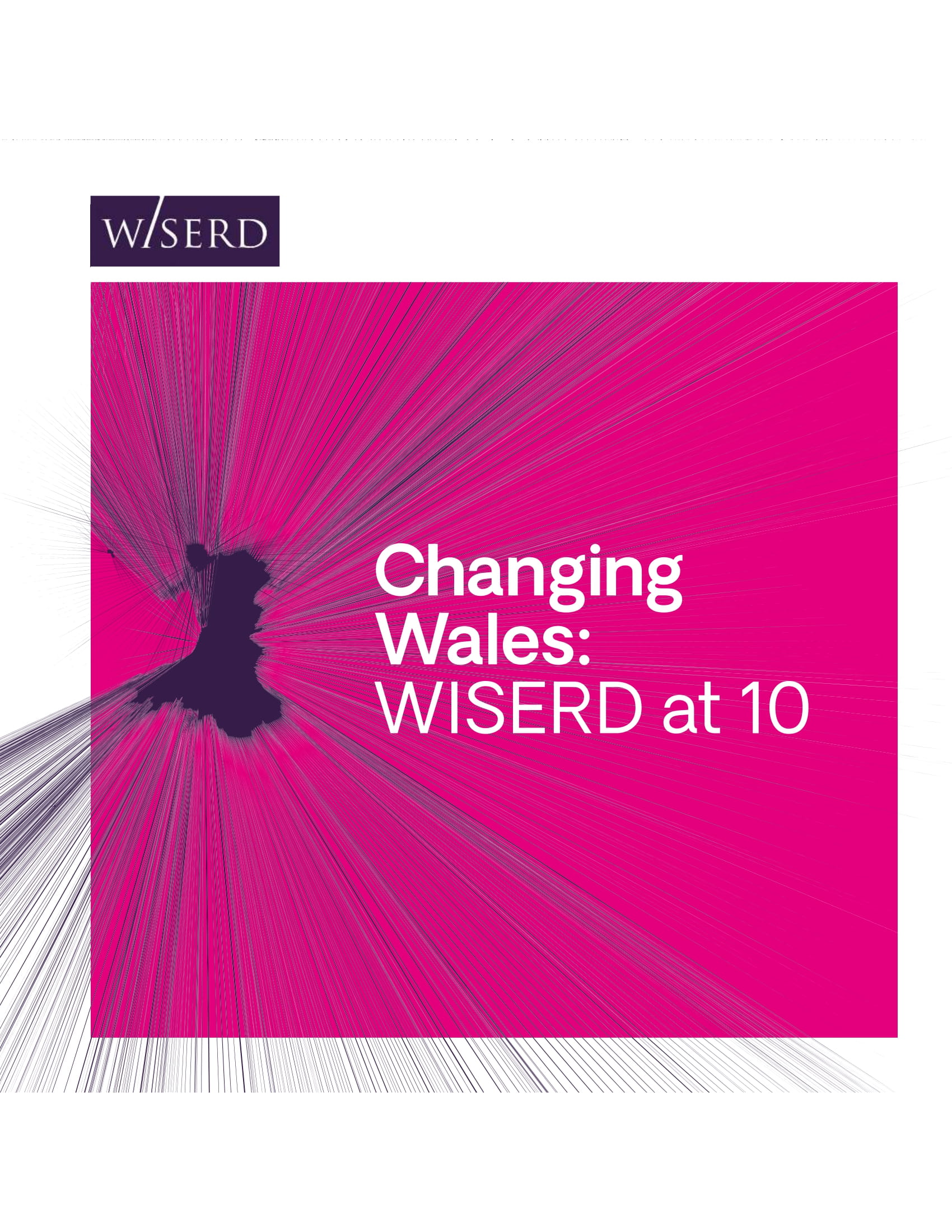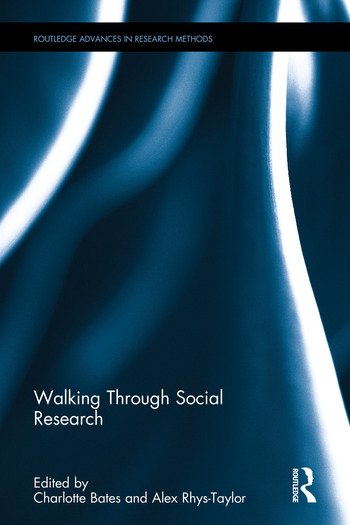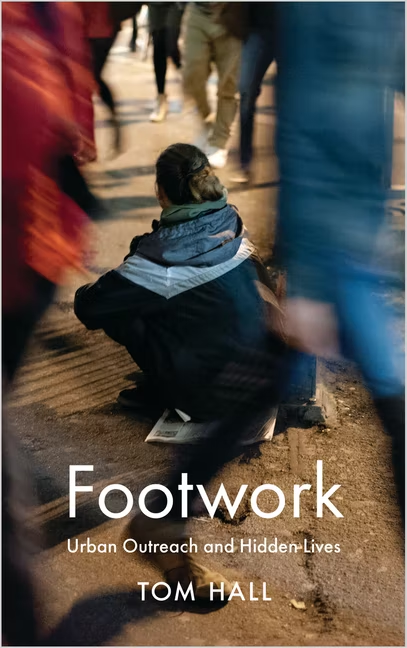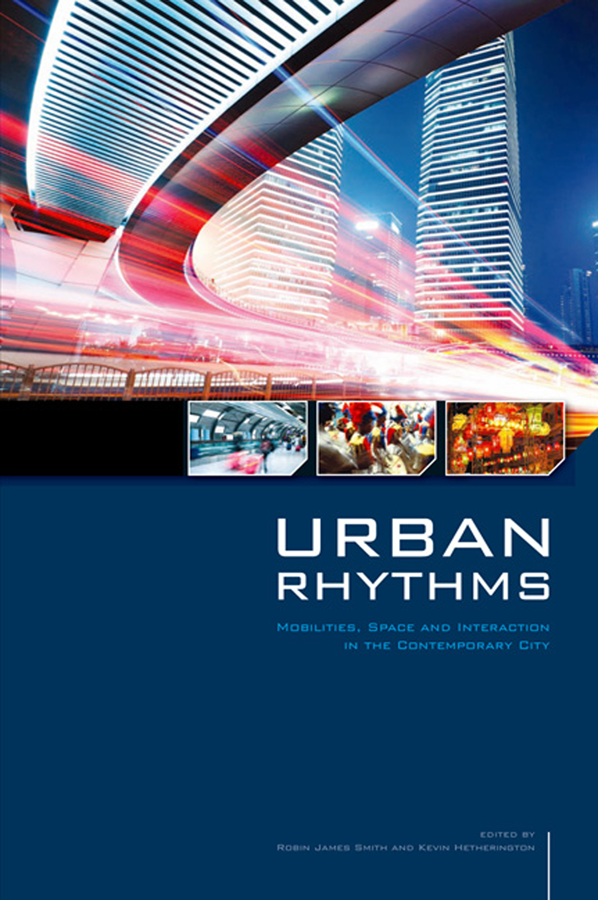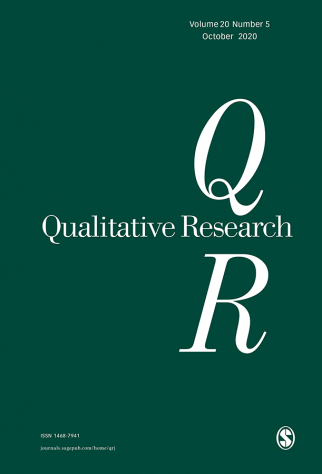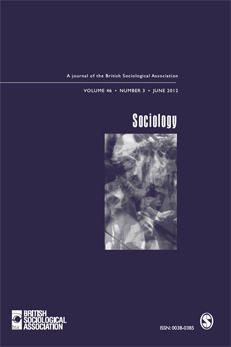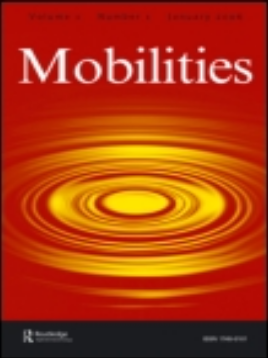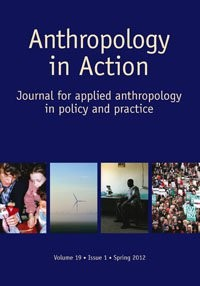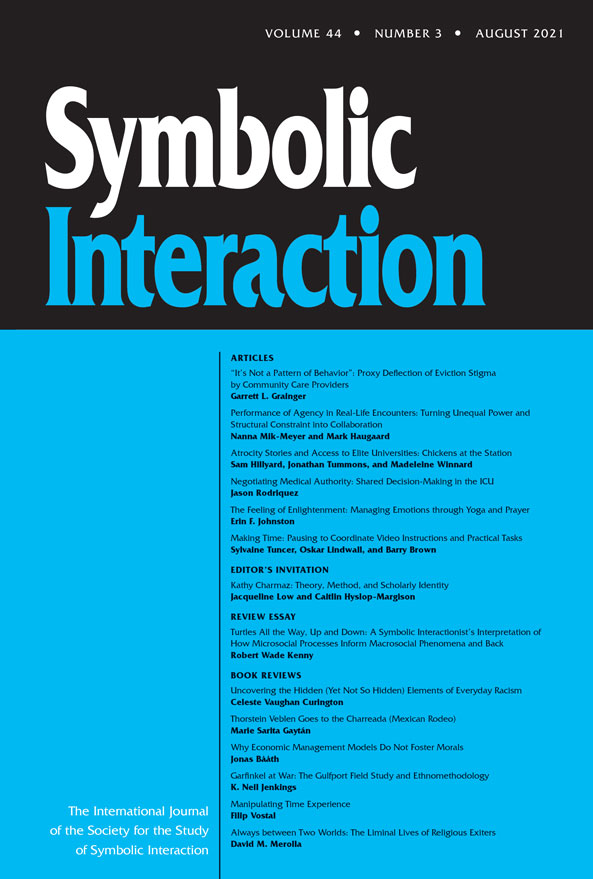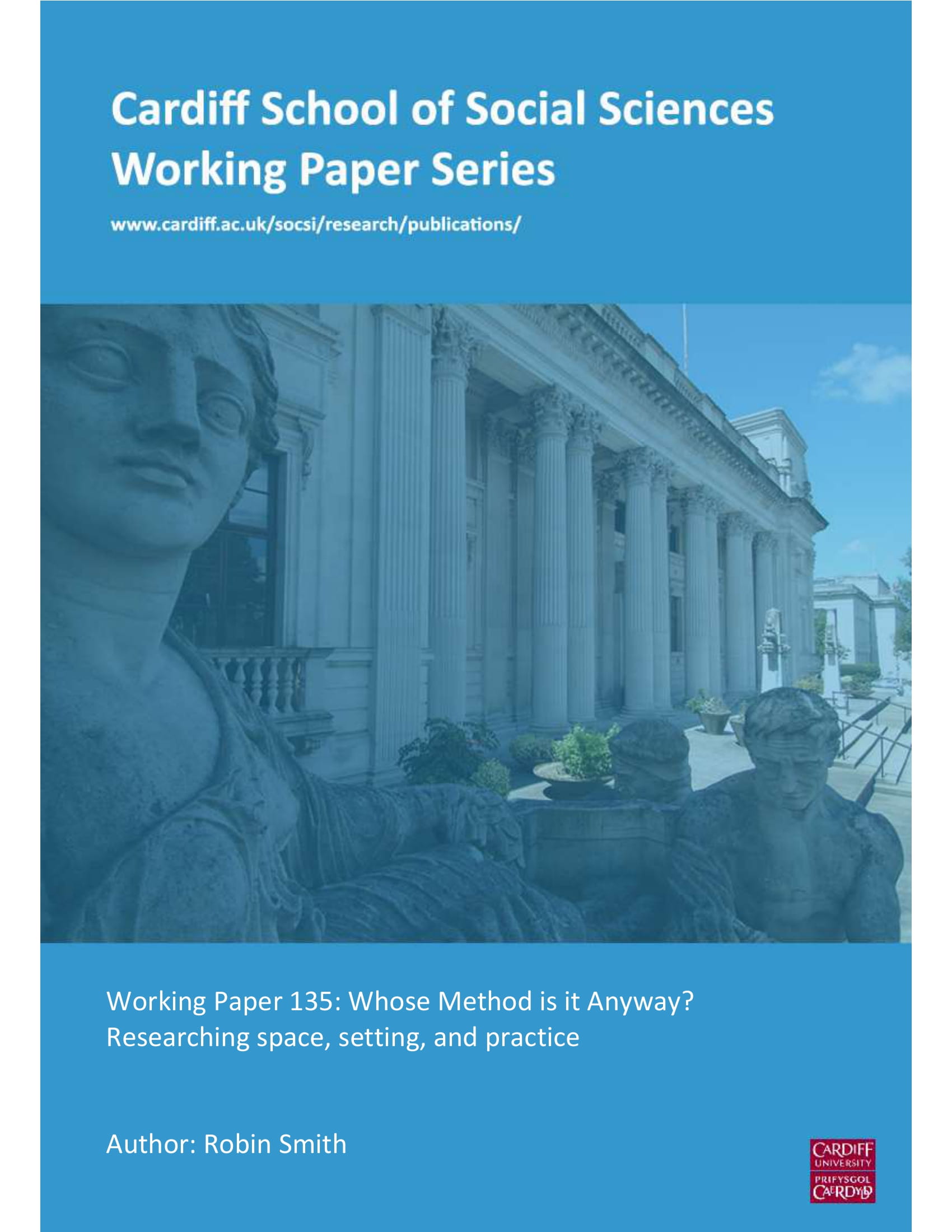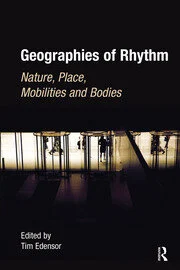The project aimed at a qualitative understanding of local knowledge as enacted in practice through a case study of the street-level management of public space, taking the city-centre and abutting residential streets of Cardiff as a field site.
Aims
The project has taken pedestrian patrol as a particular focus, and has sought to map and to understand the practices and knowledges of place through which a number of such activities operate. Instances of street level patrol addressed by the project included: street cleaning; police patrol; voluntary services to the vulnerable; and city centre management. A close and continuing focus on outreach work and patrols with two vulnerable populations – the homeless and street-based sex workers, has been central to the project.
The aim has been to capture the ways in which such patrols operate spatially, and the ways in which local knowledge is generated and employed in this context. This has meant that a perverse – persistent and contrary – connection between public space and social exclusion, between (spatial) centre and (social) margin, has provided a significant strand to the research, throughout. In seeking to understand the practice of local knowledge of place and space, the project has operated as a critique or critical engagement with maps and mapping – and has involved attempts to map the movements and know-how of the various operatives enrolled as field respondents.
Another (related) aspect of the project has been to engage with contemporary discussion of method, both professional (researcher) and lay (public). The project has not sought to test any one method – though GPS mapping has been a feature of the research – so much as to uncover and understand the methods of knowing place already in play for our key-respondents. Mobility poses a particular focus and methodological challenge in this context, and this has allowed the project to contribute to social science debate about the mobile methodologies and politics of movement (and stasis).
Overall, the research has been framed as a contribution to urban ethnography, to knowledge of the contemporary social ecology of the city, and, in that context, to methodological innovation in qualitative research.
Methodology
The overarching research strategy has been ethnographic. Participant observation has provided the main means of generating data. The project has however, combined traditional fieldwork methods with new technology for the mapping of movement and locations – GPS units have been used throughout to capture the spatial practices of key respondents. This has yielded two distinct data sets. The first of these is a substantial field-note corpus: a primary, raw record of ethnographic research and organised body of observational and other hard data written up over a period of two years – descriptive, evaluative, interpretive – including direct observation, records of verbal data (conversation and insider accounts, unsolicited and solicited) and numerical distributions of observations and responses; field-notes have also included topic-based commentaries, explorations of themes and in-process analytic writing. The second data set is a digital archive of (literally) hundreds of maps each one recording a single instance of patrol; the aggregate set capable of superimposition on a base map, in palimpsest. This second data set represents a quantitative and longitudinal record of spatial practice.
A principal intellectual focus of the project, and methodological contribution, has been a critical engagement with the relationship between these two data sets and how, each one separately and – more problematically – both in combination might allow an exploration and representation of relations of local knowledge and movement. In this sense, the project has contributed to contemporary debates relating to mobile methods and, specifically, to walking. This contribution has gone beyond conventional ‘mobile methods’ in which mobility is brought to a research object (as an elicitation device, for example – as with ‘walking interview’) by considering non-contrived pedestrian practices already in operation and researching these as mobilities.
Findings and Outputs
Project findings have been communicated through a series of papers, presentations and published articles.
Locality Study
The project was first framed, and has been conducted, as an exercise in and contribution to urban ethnography and to knowledge of the contemporary social ecology of the city. Along with other projects in the Local Knowledge in Context Programme, a key objective was to produce a detailed, qualitative account of and from a given locale – showing local knowledge of inhabited space. This has been achieved. Our location was Cardiff’s city centre and our key inhabitants, or ‘locals’, were those whose professional practice has them criss-crossing this space on a daily basis. Patrol practices of the sort are a feature of life in the centre of Cardiff but are by no means confined to this one location: they are common to all UK cities, where they can be found in one form or another, as can the issues and social problems to which they are addressed; homelessness and street care in particular (a special focus of our research) are features of urban life in cities around the world. We see the intersection of patrol work, the local knowledge it instantiates and the issues to which it responds as a case study with both a local focus and granularity and wider implications for understanding the contemporary city in comparative perspective, especially in the context of globally circulated urban renewal strategies.
Given which, a significant project finding or output has been the production of a new case-study to the wider fields of urban ethnography, mobility studies – probably the fastest growing area of sociological study over the last ten years – and to the qualitative understanding of what Lipsky calls ‘street level bureaucracy’ (literally and figuratively so, in our case).
Related outputs
All outputs listed below relate to this, one key output is:
- Hall, T. (forthcoming) Footwork: urban patrol and the modern city. London: Pluto Press
Maps, mapping, methods
As one of the component projects in the Local Knowledge in Context Programme, this research has contributed to debates about method and methodological innovation in qualitative research. Our main contribution here has been to examine and critique the way in which the social sciences might capture, represent and analyse local knowledge in action. For this project, this entailed a particular concern with relations of movement and knowledge, drawing on fieldwork research conducted in the city of Cardiff. Specifically, we critically engaged with contemporary innovations in qualitative research relating to the use of GPS mapping and spatial analysis. This involved a critique of the map as an intellectual and analytical tool. Such critiques are not new and our contribution here is to join with existing debates across the social sciences. Particularly influential over the last decade has been the work of Tim Ingold and his introduction of a dwelling perspective, notions of wayfaring as a means of combining knowledge and movement, and his critique of the logic of inversion of modernity and of modern map making. Much of Ingold’s critique relies upon an anthropological pastoral and our contribution here has been to employ and evaluate his arguments in a metropolitan context. Specifically for us, this meant an attention to the way in which knowledge and movement actually combine in the practices of our respondents at street-level. This, then, has allowed us to consider not, simply, what our participants have to say about urban space and place but, moreover, the methods by which they might lay claim to such knowledge. In this context, maps represent a particular form of knowing place, external to the practices of our respondents. As such, we argue, following Ingold, that attempts to cartographically map movement and knowledge can result in both an analytic reduction and, more significantly, inversion of the relationship between the two. Mapping puts knowledge first, ahead of the practices in and through which it is created and enacted. Equally, the map relegates territory to a neutral backcloth. Thus the combined consequence of the inversion of knowledge and movement and the relegation of terrain to backdrop is to lose sight of the production of landscape and, as we have argued, the cityscape.
Related outputs
- Hall T, Smith RJ, ‘Tailing, trailing and tracing: a methodological (re)consideration of mapping, movement, knowledge and urban outreach work’ (under review: Qualitative Research).
- Smith RJ, 2011, ‘Whose Method is it Anyway? Researching space, setting, and practice’ Cardiff University Working Paper Series Paper 135
- Smith RJ, 2010, ‘Researching Space, Place, and Setting: Perspectives on Theory and Method’ paper presented at ESRC Research Methods Festival, 5-8 July, UK (Invited paper)
- Smith RJ, Hall T, 2010, ‘Local knowledge: place, non-place and urban spatial practice’ paper presented at ESRC Research Methods Festival, 5-8 July, UK
- Smith RJ, Hall T, 2010, ‘Local knowledge and spatial practice: urban patrol(s) in central Cardiff’ paper presented at WISERD/SOCSI Seminar Series, 3 June
- Smith RJ, Hall T, 2010, ‘Mapping Urban patrols? Spatial Practice and place-binding knowledge’ paper presented at EUROQUAL: ‘International Perspectives on Qualitative Research in the Social Sciences, 4-6 May
- Smith RJ, Hall T, 2009, ‘Connections Made Visible: Place-bound Knowledge and the Map as Intellectual Tool – Keynote Address’ paper presented at EUROQUAL: Spatial and Network Analysis in Qualitative Research Nicosia, November, Cyprus
Care, repair, welfare and the good city
The project has made and is making an empirical and critical contribution to a particularly productive inter-disciplinary set of recent arguments about ‘everyday urbanism’, most of which originate or can be traced back to geography/urban theory, and the writings of Ash Amin and Nigel Thrift in particular. Everyday urbanism is an eclectic body of ideas that has been repeatedly offered up as a spur to thought about city life but which lacks to date any sustained empirical examination. A key trope is the idea of maintenance and repair – minor and inconsequential urban activities, which see the city through from one day to the next but which tend to remain taken for granted and often unnoticed. An attention to the somewhat trivial practices of patching up, mending and tinkering that take place in the city represents a turn away from ‘big picture’ urban theory and a recasting of debate about the politics of the city which has moved beyond binaries such as utopian/dystopian toward a nuanced understanding of the complexities of a social and spatial urban politics played out each day in the city.
Our project has contributed to these discussions by way of an empirical case study of such practices of maintenance and repair as found in the city centre of Cardiff. This is significant as everyday urbanism lacks an empirical base through which to examine its own claims; our project goes someway to addressing this imbalance. In doing so we have examine not only instances of physical repair and maintenance – street sweeping, pavement repair – but also welfare practice relating to the repair and upkeep of the social fabric of the city: crisis intervention, street based welfare and social services, advice, mentoring and advocacy. Both elements were considered in the context of a capital city undergoing a programme of sweeping renewal, going far beyond any notion of daily repair and upkeep to transformation, but one in which such quotidian practices remain bound up. The project has examined the obvious politics of public space and social in/exclusion (the urban homeless, for example, figure prominently in everyday urbanists’ arguments about the good city), but from both sides, looking at welfare practices and the caring professions but also from the perspective of city centre development, management and policing. Moreover, we have argued that everyday urbanists have not fully appreciated the politics of care and repair, which is not only a variously distributed and received urban and quotidian ‘good’ but, rather, is in itself a contestable practice which can play either way and warrants critical and reflexive examination in the context of a regenerating cityscape. A recognition of this politics has involved an obvious turn to discussions of repair and social (dis)order (i.e. broken windows theory (Wilson and Kelling, 1982) and, perhaps less expectedly but productively, to Goffman’s discussion of ‘repair cycles’. This work is ongoing and will form the basis of scheduled conference presentations, writing and publication.
Related outputs
- Hall T, Smith RJ, 2011, ‘Walking, Welfare and the Good City’ Anthropology in Action 18(3) pp 33-44
- Hall,T, Smith RJ, 2012, ‘Moving encounters: outreach work, searching and pedestrian practice’ paper presented at RGS, Edinburgh, UK
- Hall T, Smith RJ, 2012, ‘Keeping up appearances’ paper presented at Edinburgh Human Geography Seminar Series, Edinburgh, UK(Invited paper)
- Hall T, Smith RJ, 2012, ‘Keeping up appearances: the street-level politics of care and repair BSA’paper presented at Sociology in the age of austerity,11 April, Leeds, UK
- Hall T, Smith RJ, 2011, ‘The politics of welfare and the good city’ paper presented at WISERD Annual Conference, 28-29 June, Swansea, UK
- Hall T, Smith RJ, 2010, ‘Tinkering at the Margins: The outreach encounter’ paper presented atBSA Annual Conference Glasgow, April, Glasgow, UK
Movement and mobilities
The research has contributed to the sociological examination of mobility, not only as an empirical practice (which we have variously documented in ethnographic context) but also as a concept or value. The academic context here has been one of a critical enthusiasm for mobility as a new object of attention and also a reconfiguring lens through which to re-examine (and deconstruct) familiar objects. (Few would argue that mobility is not vital to today’s sociological imagination: in 2010, the International Sociological Association (ISA) ended the first decade of the 21st century in Gothenburg with a World Congress of Sociology under the organising theme ‘Sociology on the Move’; in the same year, the American Anthropological Association met in New Orleans for its annual conference, for which the theme was ‘Circulation’ – we attended and presented work from this project in a session we organised on Domesticating Urban Space ).
In this context our research has perhaps acted as an empirical and theoretical brake. We have, in this sense, emphasised the continuing significance of the pedestrian in a world apparently speeding up and certainly moving at great pace. In doing so, our research has contributed to a small, but growing, series of investigations of walking and pedestrianism within the wider mobilities literature. This body of studies stands for itself but also as representative of a criticism of a sometimes normative enthusiasm for enhanced movement and automobilities at larger scales.
The deceleration of attention bought on by the focus on walking practices has been extended, in our case, in to a further questioning of the framing of movement, as object, in the mobilities literature. The argument can be made (the point is probably moot) that the mobility literature itself exhibits some of the same valorisation of movement that it at other times, usefully, critiques. In this context, we contribute a critical argument about the relative framing of movement and stasis (defined as an absence) within the sociological treatment of mobility. We have used our fieldwork and analysis to make a case for an attention to stopping and stasis not simply as the absence of movement but, rather, as significant social practices and accomplishments in their own right. This argument was made in the context of a city centre in which movement, and particularly walking, feature as centrally important to the redesigning and renewal of public spaces but which, in consequence, cast immobility as problematic, as a nuisance. The homeless provide a stark and illuminating case study of a population for whom movement figures as a burden and stopping, finding somewhere to stay and be still, is a rare and fragile accomplishment. (This deep mobility politics takes us back to, and enhances, an existing analysis of the politics of public space as discussed above.)
As a study in mobility practices and an investigation of the ways in which local knowledge of place combines with movement, our project has contributed to a burgeoning literature on ‘mobile methods’. As noted above, the key difference for us has been that mobile methods are what we have found already in play and have attempted to scrutinise and understand; such methods have not been brought to the research context as a means of eliciting accounts of experience, rather they are central to the experience of informants themselves (the ‘walking interview’, a recent staple of qualitative methods, is seldom about walking – much more often about something else entirely: talking). Walking has figured throughout the research and analysis not as a means to access local knowledge of place, but as the method by which any such local knowledge is first built up. To recognise this is to make an implicit but essentially profound critique of much of the current literature on mobility as social science method.
Related outputs
- Hall T, Smith RJ, ‘Stop and go: a field study of pedestrian practice, immobility and urban outreach work’ Mobilities (In press)
- Smith RJ, 2012, ‘Where Does Mobility Get Us?’ Sociology 46(3) (In press)
- Smith RJ, 2010, ‘Domesticating and Domesticated Urban Space’, conference session at American Anthropological Association Annual Meeting: Circulation, New Orleans, USA
- Smith RJ, 2010, ‘Circuits of City Space: Moving and Meeting With the Homeless’ paper presented atAmerican Anthropological Association Annual Meeting: Circulation, New Orleans, USA
- Smith RJ, Hall T, 2010, ‘Local Motion, Local Knowledge: Research ‘On the Move’ With Urban Patrols’ paper presented at American Anthropological Association Annual Meeting: Circulation, New Orleans, USA
- Smith RJ, 2010, ‘The Urban Problem: From the Bay to the Soup Run’ paper presented at British Council-Netherlands Knowledge Exchange Workshop on Urbanism, TU Delft
- Smith RJ, 2010, ‘Hotspots, Stops, and Plots: On Mapping Urban Patrol’ paper presented at Cardiff Centre for Crime, Law and Justice, 22 September, Cardiff, UK
Collateral themes
This project, cast from the outset as an open and ethnographic engagement with the complexities of street level knowledge and practices, rather than as a linear experiment or test of hypotheses. Consequently we anticipated and made allowances x in planning the project for additional, emergent and unexpected lines of inquiry and interest. These continue to develop but three that have been pursued are listed, with outputs, below.
The first was an interest in the sensory perception and experience of the urban environment as found in the practice of outreach work. This theme connects to the developing area of sensory ethnography and also of a sensorial urbanism attentive to the links between perceptual capacity and the urban habitat. Understanding the ways in which street level practitioners perceptually engage with a recursively known cityscape clearly connects to these interdisciplinary literatures and, furthermore, to the methodological development strand of WISERD. We have contributed a paper to a session on ‘Sensing the city’ at the Royal Geographical Society conference in 2009 and continue to develop work and contacts in this field.
A second collateral area of interest was a specific interest in stigma and encounters between strangers in urban space. These themes are constitutive of the work of those we have spent time with in Cardiff and of course form a foundational concern for both urban sociology and symbolic interactionism. A paper was developed which revisited Goffman’s interaction order in analysing and describing the strategies employed by outreach workers and the homeless in their interactions. In particular, the analysis demonstrated the way in which stigma was ‘normalised’ and disattended to in the course of the outreach encounter, allowing its successful accomplishment in line with institutionalised goals. This was successfully submitted to a call for a special issue on Interaction in a leading US journal.
A third area of development has been to consider rhythms in the context of urban walking practices. Clearly walking is a rhythmic activity in its own right, but our interest here is in the ways in which pedestrian patrols intersect with wider urban rhythms; day, night, seasonal, economic and so on. Interest in urban rhythms is a growing interdisciplinary arena of inquiry taking its inspiration from the work of late French sociologist Henri Lefebvre. Our own work in this area has tended to the empiric rather than the philosophical and has sought to show the ways in which changing rhythms of city use both structure and are revealed by the unreported activities of pedestrian upkeep and patrol. We have already published some of this work and have successfully bid to edit a Sociological Review Monograph featuring our own and international contributions.
Related outputs
- Smith RJ, Hetherington K (editors), 2013, Urban Rhythms: The socio-temporal organisation of the contemporary city, Sociological Review Monograph Series (Wiley, Chichester)
- Hall T, Smith RJ, 2013, ’No time out: exploring the real twenty-four hour city’ in Urban Rhythms: the socio-temporal organisation of the contemporary city Ed(s) RJ Smith, K Hetherington [Sociological Review Monograph Series] (Wiley, Chichester)
- Smith RJ, 2011, ‘Goffman’s Interaction Order at the Margins: Stigma, role, and normalisation in the outreach encounter’ Special Issue: Interaction Symbolic Interaction 34(3) pp 357-376
- Hall T, 2010, ‘Urban outreach and the polyrhythmic city’ in Geographies of Rhythm: Nature, Place, Mobilities and Bodies Ed(s) T Edensor (Ashgate, Farnham)
- Hall T, 2009, ‘Urban Outreach as Sensory Walking’ paper presented at Royal Geographical Society Annual Meeting: Geography, knowledge and society, August, Manchester, UK
Impact
Beyond the academic and intellectual contribution of empirical data and argument, the project has made an impact in two ways, firstly as a contribution to capacity building and research skills in the social science community. As a demonstrator project, our work has provided a basis for workshop training and discussion, of methods of data collection, analysis and research representation, with mixed audiences at a number of key venues.
A second area of contribution or impact has been to attempt to feed in to professional knowledge and practice, not through the production of materials for policy makers so much as through engagements with practitioners. We see this as a non-standard and important challenge to the dominant and rather hidebound notion of academic impact which privileges forums and mechanisms for communication between academics and ‘policy makers’. The point being that such communication, be it successful or otherwise, necessarily takes place over the heads of those it directly affects – at street level, hence our attempts to engage directly with practitioners. We organised a successful session at the 2011 WISERD conference bringing Cardiff outreach workers into dialogue – presenting their own papers and discussing others’ – with academics researching in the mobilities field (Roundtable: Urban Outreach & Homelessness – Perspectives on Research and Practice, Sketty Hall, Swansea). This event led to a reciprocal invitation for keynote (academic) presentation at the Frontline Workers’ Forum 2011 (Access: Breaking through the Barriers, Cardiff City Hall 19/09/11) to an audience of street outreach and other frontline workers from across the spectrum of social care services.
It is worth noting that the research reported above is not concluded, and that research relations with our assorted respondents have continued beyond the focused period of this project. These relationships are ongoing, as are the practices to which they attend. We take this to be a model of reciprocal engagement which perhaps cannot be easily captured as impact (we can note a similarity between ethnographic research and street-level bureaucracy: each struggles to show the work it does as snapshots of impact).



